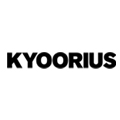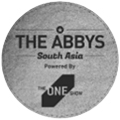
Differentiation versus relevance: Why the nuance matters for winning in India
Dheeraj Sinha, group CEO of FCB Group India and South Asia, tells WARC India Editor Biprorshee Das about the importance of brand relevance versus differentiation in India’s diverse and dynamic market and how brands can navigate the country’s regional nuances while staying true to their core values.
WARC: How do you define brand differentiation and why is it important?
Dheeraj Sinha: A lot of this depends on the category in question and the stage it is in. If you look at the personal care consumer product or the FMCG category, where the market is fairly penetrated, you must differentiate your product. If I am Sensodyne and I want to take share away from Colgate, and I come with a sharp positioning around sensitivity and solve a real problem, I am then able to win a large part of the market share. A lot of this is happening right now with DTC brands attacking some of the established personal care categories with specific differentiated propositions.
In deeply penetrated categories where the market has been through a few rounds of consumption, differentiation is the only way to garner market share.
At the same time, India also has many other categories that are just about being built. You could look at the work I did in my previous organisation (Leo Burnett), where we built the e-commerce or digital payments or music streaming categories. In such cases, what becomes more important is building relevance first. You have to go out and tell people why each product or category is good. Once you’ve established the connection, need and relevance, you start talking about differentiation. In these cases, you will fail if you lead with differentiation; you must lead with relevance.
When Uber entered India a decade back, the category was fairly new. Uber was already an established brand globally but it was a category that had to be built in India. What was the challenge there?
It is all category-building work we have done for Uber. You are taking a certain behaviour or consumer pain point and you are offering a better solution. Uber India’s largest share of rides is through auto rickshaws. That is a category we built in ridesharing from the ground up. If you look at the market for mobility in India, the larger market is in conversion from un-organised offline to the organised online category.
It is still a game of building relevance, building a superior product, organising the market and addressing the consumer pain points. The biggest insight into India is that you don’t come to India and say, “Here’s a new way of doing things”. India doesn’t like to be told that. India accepts change on the grounds of familiarity.
For example, when we were building Amazon (at Orchard India), we said it’s just like your neighbourhood store. It calls you by your name, it gives you a recommended list, there is cash on delivery and exchanges without questions asked. It’s exactly the experience your neighbourhood retailer offers. You don’t say, “Here’s Amazon, a whole new way of shopping”. No, you don’t do that in India.
Similarly, when we brought in Spotify (at Leo Burnett India), we created grounds of familiarity first. The operating insight for Spotify was that India is actually a Murphy’s law country – what can go wrong will go wrong and music cannot solve everything for India but it helps you hustle on. It makes the day more bearable, a little better and that’s really the role of music in India. So everywhere, our experience at least in the last decade of building new categories in India has been around building familiar grounds for new experiences and that’s how you succeed in India.
Do you think the diversity of the market can be challenging when it comes to brand differentiation?
That’s true. I think you win India ground-up. You don’t win India nation-down. It’s important to understand the behaviours, insights and even the nuances of each region and play up to those.
I’ll give you a couple of examples. When we were doing work for Mountain Dew (at Leo Burnett), we realised that Mountain Dew is not as strong in Punjab and the reason was that the whole proposition of “Darr ke aage jeet hai” (“ahead of fear lies victory”) wasn’t firing in Punjab. The culture of Punjab is not about fear, it’s a confidence-led culture. The proposition we went with in Punjab was “Darr nu darra” (“scare fear”). We built a music video around it with local nuances that started working for the brand.
Similarly, the whole body of work we did for brands such as Spotify, we did it in Hindi, Telugu, Tamil and other languages. The work we’ve done for Uber goes across all languages and their different nuances. These are not just dubs but these are different nuances and insights that you work with in different languages. The fact that India is not one India is a big reality; you have to begin to win India region-up.
Doesn’t it then get difficult for a brand to identify its USP, to differentiate its products and services in this market?
The broad narratives are still the same. For example, if Uber is about unlocking opportunities through mobility, it doesn’t change whether it is Delhi or Tamil Nadu or Andhra Pradesh. The strategy to say that you have to convert an offline un-organised market to an online superior organised market doesn’t change because that state of the nation is similar across India. It’s not that some parts of India are dramatically more developed than other parts.
You have to start to make a difference with behaviours that are different in different regions. You need to have that slice of life when you are building communication. You have to look at content that is region-up. The good thing now is that media is fragmented. You can use digital, you can use local mediums. There are influencers available in different languages. So the cost of creation doesn’t have to be so high if you’re doing a region differentiator strategy.
In a market as competitive as India, what role does innovation play in achieving brand and product differentiation?
If you do innovation for the sake of innovation in India, you will fail. This country needs innovation wherein you unlock dramatic advantages for the consumer. Say your consumer is suffering from delays in mobility – the buses are delayed, autorickshaws are not available. If you can solve that through innovation, you are okay. Innovation in India has to solve real problems or opportunities.
Can you share success stories of brand differentiation strategies at FCB?
We have examples of several brands that have been built at this agency over decades. Amul is a great example of a high degree of consistency, being true to consumer needs and being authentic. It’s a flag bearer of how you can build a strong loved brand by being authentic, real to consumers and by being consistent. We don’t change things on that brand just for the sake of it ever.
Similarly, there is Mahindra and Mahindra and the whole SUV segment and how that has been built over a period of time by FCB Interface. It has been done right by building a new category, building the aspiration value. Some of the work, which was done a decade ago, still looks cool.
Most of the examples at FCB fortunately are of impact and categories built over decades and built with consistent strategy, not being a flash in the pan.
How do you stay consistent in this dynamic market with your storytelling, messaging and communication?
The joke in our circuit is that whenever there is a new brand manager, you have to change the narrative. I think we get bored of the messaging sooner than the consumer does. I am a big believer in keeping the narrative consistent but the expressions could change. Therefore, it is important that your narratives are large and broad.
If you lock yourself into a narrow, very specific narrative, you will outlive that with five executions. It is important to note that when we craft the narrative, are we doing it for a campaign? Therefore it is a narrow narrative or are we crafting it for the brand for which there is a large platform?
Therefore, if you look at narratives that are long-lasting, they are large platform narratives that last longer.
How should a brand balance differentiation while maintaining its core brand values and identity?
The biggest focus needs to be on consumer value. And what is the definition of value? It is not what you think is valuable to the consumer. For example, in India, e-commerce doesn’t sell for convenience. We have all the time in the world. We can go to the shops, check things out, go to other shops. We don’t have a paucity of time as a country and culture. E-commerce works in India because it gives you access to the same products and variety from any part of the country. The fact that it’s the greatest leveller, whether you’re in a small or a large town, is the value proposition of e-commerce in India.
SUVs in India sell for the fact that you can go on bumpy, uneven roads. They’re not for off-roading in India, they are for off-roading on main roads here because that’s the driving experience in India. SUVs also work in India because they give you a bit of status and some right-of-way on the road.
You have to understand the real motivation of why a category is valuable to consumers and those motivations may not be the most apparent surface-level ones. Once you’ve got that right, then it is easy to differentiate your brand on those parameters and yet stay very, very close to what I again call relevance and core values of the brand.
Where do the gaps lie in this market? Is there over-reliance on certain channels?
From a business and market perspective, the gaps now lie in premiumisation. Across categories, consumers are looking for premiumisation, whether at the bottom or mid-pyramid. Everybody is looking for an upgrade and premium products.
Unfortunately, some of our large marketing or business initiatives are tailor-made to deliver the extreme mass end of a product, very value-driven products. For example, in the biscuit category, the market is designed to deliver the base-level product at scale at a certain price. But consumers want an upgrade. How do you fulfil that desire? This is across categories, whether it is apparel, mobile phones or food.
If you look across categories, consumers in India today are not buying for convenience; they are buying for aspiration.
Also, if you look at our creative work, a lot of it is beginning to look similar. It is becoming formulaic. If you look at the kind of entertainment people are consuming on the OTT channels or in cinemas, a different kind of narrative is winning. Marketing can learn a bit here by borrowing some of those slightly different narratives. All work need not have the same curve. New formats, ways and channels of storytelling are a big opportunity for advertising and marketing.
How do you measure the success of brand differentiation efforts in the Indian context?
Success has to lead to business. If I am putting out new work for Uber, it has to lead to new acquisitions, new rides. There is no other measurement of success in my mind. Of course, we also measure brand and social matrices but those, by themselves, do not move the needle for business.
Gone are the days when you did one large fluffy video for a brand and said, “Oh my God! So what if it did not move business, it moved my brand metrics”. I don’t think anybody has patience or money for that in this market. When you release a piece of work, if consumption then goes up, if there are more sign-ups, you get to know in three weeks. You don’t need a special industry report to tell you that – 90% of the work coming from FCB is coming out to deliver business results and we get to know immediately whether we are being successful or not.
Article first published on WARC.














